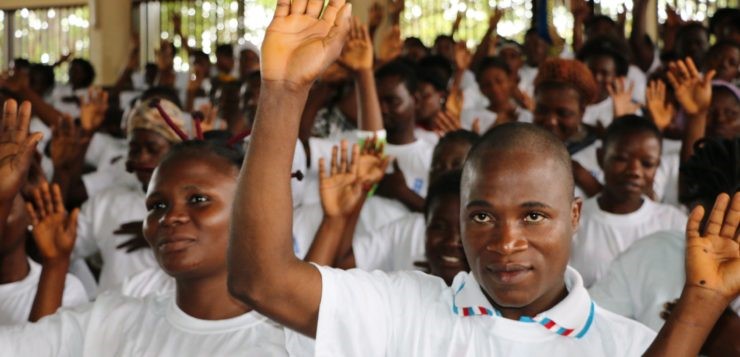| Context
Located in West Africa, Togo covers an area of almost 56,600 km².It’s economy depends mainly on agriculture, phosphate mining and trade. According to a 2011 survey, the unemployment rate was 6.5% for the population as a whole and higher at 8.1% for young people from 18 to 35 years old. The phenomenon affects only those who have a secondary level education 3.3% or higher 7.2% and those who have no academic training 1.7% or a primary level 2.1%. The informal sector has the largest number of job opportunities in Togo. According to Amouzou 2012, difficulties in having access to loans restricted young people’s entrepreneurship skills until the recent introduction of government funding programs for young people. Unfortunately, many young people begin to overlook these programs as they suspect that the criteria are not well-respected, sometimes-giving rise to patronage. The National Volunteering Agency in Togo (ANVT) was set up in 2010 by the government through the Ministry of Development, Crafts, Youth and Employment of Youth. The program, which has national coverage, offers an opportunity to young graduates and first-time job seekers to gain work experience.
Implementation of program There are many reasons why young people’s unemployment rates tend to be higher than adults, one of which is that young people are often placed in a catch-22 situation where potential employers require young people to show work experience but young people are not able to acquire such experience without first being hired. The program recruits and trains young people between 18 and 35 years of age, and assigns them to a three-year stint in civil society organizations, public administrations, local communities and the private sector. The operation of the program can be summarized in three parts: (1) mobilization of candidates and structures, (2) recruitment, training and assignment, (3) follow-up and accompaniment. Each participant receives a monthly subsistence allowance of between $80 and $100, depending on their level of qualification. The program is financed by the Government and the United Nations Development Program (UNDP).
Main challenges A major challenge is the high demand relative to the placements available; to date, more than 60,000 young people have applied for the program which has a very low acceptance rate of about 8%. This is mainly due to the lack of hosts institutions and also to the mismatch between candidates’ training and the requirements of the destination organizations. On the part of volunteers, the main complaint is that allowances are insufficient and tend to be paid late.
Results A total of 5,030 young people have benefited from this program (about 40% of them female) and 1,350 have succeeded in finding jobs at the end of their three-year volunteer service. They work in different sectors such as education, health, local development, agriculture, environment, etc.
Moving Forward This program can be sustained by encouraging more organizations. They should be an effort to evaluate the program to make sure that it is benefitting both the volunteers and the placement organisations, and to identify challenges in implementation such as those that delay payment of allowances.
Replicability ANVT has already been the subject of presentations in Mali, Niger and Japan. Several institutions, such as UNDP, France Volunteer and the United Nations Volunteer, believe that it must be encouraged and supported. The program can be replicated in any country with a government willing to provide the funding, internally or through external support, to run such a program. |
| References
https://www.anpetogo.org/projetprogramme/images/PROGRAMME.pdf http://www.caderdt.com/wp-content/uploads/2013/12/Etude-Emploi-des-Jeunes.pdf ANPE. Etude sur les emplois directs créées par l’exécution des projets/programmes du gouvernement en 2013, Rapport final, Septembre 2015. |
Project Details
Date: November 20, 2017
